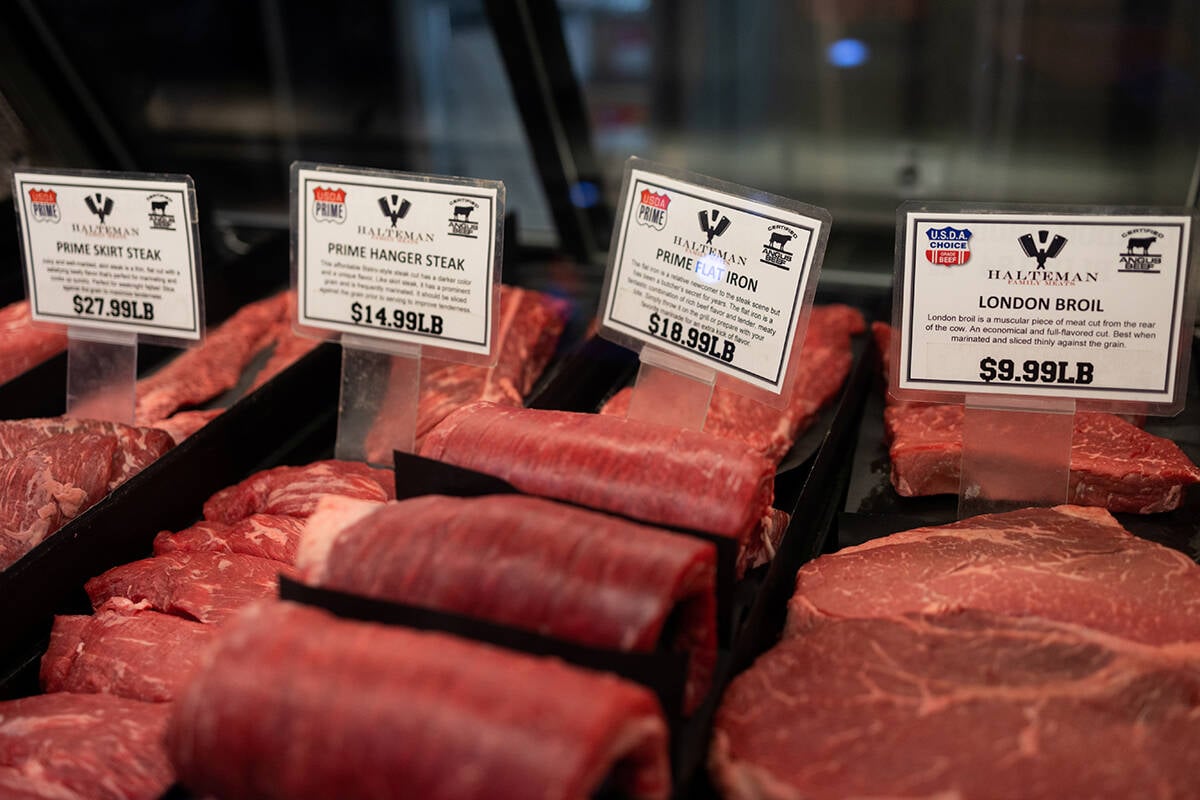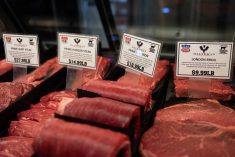A report commissioned by the American Soybean Association and the U.S. National Corn Growers Association warns that a new trade war between the United States and China would cost American farmers while benefiting producers in Brazil and Argentina.
See Sean Pratt’s story on the report here.
President-elect Donald Trump says that when he takes office in January, he’ll again use tariffs to fight what he considers unfair trading practices, with a particular emphasis on China.
Read Also

Trump’s handling of the beef market isn’t helping matters
It appears U.S. president Donald Trump’s knowledge of the beef industry is pretty much limited to his taste for Big Macs.
He did this in 2018 during his first term. His tariffs against Chinese goods prompted Beijing on July 6, 2018, to impose its own 25 percent tariff on $50 billion worth of U.S. goods, affecting primarily soybeans.
There was a truce in January 2020 when the U.S. and China signed the Phase One Agreement, in which China stopped charging the tariffs and committed to buying $80 billion of U.S. agricultural products, although that amount has never been reached.
The trade war was only six years ago but it is easy to forget the details of the tumult.
Canadian agriculture was caught in the crossfire and the impact was compounded by separate Chinese actions against Canadian canola imports.
At the request of the United States, Canada on Dec. 1, 2018 detained Chinese tech giant Huawei’s chief financial officer Meng Wanzhou. A U.S. court had issued an arrest warrant against her for breaking U.S. economic sanctions against Iran.
On Dec. 8, China detained Canadians Michael Kovrig and Michael Spavor.
Then in March 2019, China blocked licences of Richardson International Ltd. and Viterra Inc., preventing them from exporting canola to China.
Over the course of a few months, global oilseed trade underwent a wrenching realignment.
U.S. soybean exports to China dropped from 28.7 million tonnes in 2017-18 to 10.3 million in 2018-19. The Chinese shifted buying to Brazil and Argentina.
U.S. soybeans had to find new markets, but were not able to completely offset the losses in China. Soybean exports in the two years of the trade war were down about 20 percent.
In June 2018, when China announced its tariffs, soybeans on the Chicago market fell from roughly US$10 per bushel to around $8.30, a drop of about 17 percent, and mostly stayed below $9 until the summer of 2020.
Canola prices that had been above C$500 a tonne in 2017 also fell in the summer of 2018 but the decline was more gradual and the price drifted down to around $450 after China limited canola trade in 2019.
Total canola exports in 2018-19 of 9.2 million tonnes were down about 10 percent from the year before, but climbed above 10 million tonnes the next year.
The report commissioned by the American Soybean Association and the U.S. National Corn Growers Association, carried out by analysis group World Agricultural Economic and Environmental Services, says the U.S. lost an estimated US$27 billion in agricultural exports because of the trade war.
The Trump administration softened the blow by creating a market facilitation program worth US$23 billion. The ad hoc, quickly created program lacked transparency and oversight, leading to fraud and unfairness.
However, the federal aid helped keep U.S. net farm income steady through the trade war.
Canada’s government did not provide special aid during this period.
Canola crop receipts in 2017 were C$9.95 billion, slipped to $9.3 billion in 2018, fell further to $8.6 billion in 2019, but climbed to $10.2 billion in 2020.
Brazil was a major beneficiary from the trade war.
American soybean exports to China in the three years 2015-17 averaged 31.5 million tonnes, while Brazil’s average was 48.7 million.
In the two years of the trade war, 2018-19, the U.S. average fell to about 14 million while Brazil grew to 65 million.
After the trade war, 2020-22, U.S. China-bound exports climbed back to the pre-war average of 31 million tonnes but Brazil remained the dominant player with 58.5 million tonnes.
With the increased demand from China, Brazilian soy area rose by 20 percent or 20.5 million acres in the last five years. By comparison, that’s equivalent to all of Canada’s wheat area.
China attempted to increase domestic soybean production but has had little success.
The trade war ended in 2020, but China maintained tariffs on American crops and chose to waive them each year since.
The Biden administration kept many of Trump’s tariffs on Chinese goods, but Trump has spoken of increasing them to 60 percent on all goods.
We don’t know how China would respond, but it would be easy for it to end its waiver of the existing tariffs, which would again disrupt crop markets.















